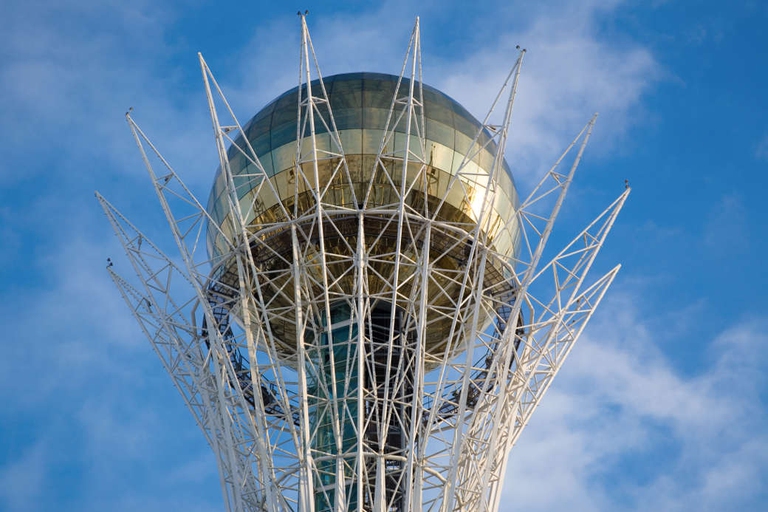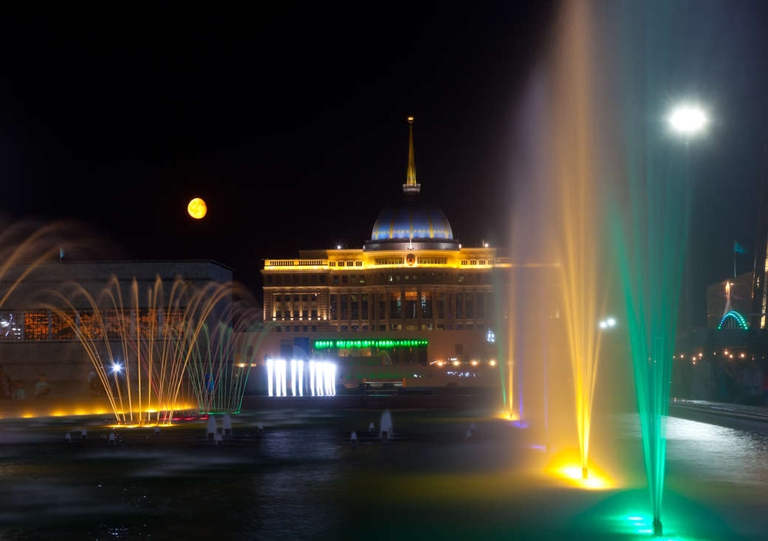
Niseko, Toya-Usu and Shiraoi are three Hokkaido destinations for travellers who want to feel close to the communities they’re visiting.
Nella capitale del Kazakistan tra giugno e settembre si svolge Expo 2017. Cosa vedere ad Astana, una capitale moderna dal carattere sia orientale sia occidentale.
After Expo Milano 2015, the capital of Kazakhstan is hosting Expo Astana 2017. But few people know the history and places of interest of this city. Let’s discover what Astana has to offer as a modern capital, from its identity based on Eastern and Western cultures to its futuristic architecture.
Astana is a young city built for the will of Kazakhstan President Nursultan Nazarbayev who wanted to move the country’s capital from Almaty in 1997. The decision was taken due to the geopolitical position of the city – it is located in the middle of Kazakhstan and the Eurasian continent – as well as due to its infrastructures that facilitate transports and communications. The new capital was also chosen for the abundance of space and lands to allow its development. In 1998 the city was named Astana, which means “capital” in Kazakh.
The architectural concept underlying the city’s development is a Eurasian vision, resulting in a place that unites the Eastern and Western world in a harmonic way. This ambitious goal is achieved thanks to the excellence of the contributions. The author behind the Astana Master Plan is renowned Japanese architect Kisho Kurokawa, who also designed the Van Gogh Museum in Amsterdam, Kuala Lumpur International airport, and the National Museum of Ethnology in Osaka.
Among other important contributions is British architect Norman Foster, who designed and built the Palace of Peace and Reconciliation and the Khan Shatyr Entertainment Centre.
Today, Astana is an ever-changing city that raises the interest and curiosity of a growing number of tourists.
The Bayterek Tower, the tree of life in the middle the city and Eurasia, is the emblem of the capital. Everything in this monument is symbolic: the golden sun on top (at 97 metres of height) and the interior architecture representing the three fundamental universal principles. Bayterek means “poplar” in Kazakh and its structure made of metal, glass and cement is unique and magnificent: it is 105 metres tall, weighs 1,000 tonnes, and is sustained by 500 poles. The glass sphere on top changes colour with sunlight and is suspended at a record height.
The Palace of Peace and Reconciliation is a pyramid built by Norman Foster in 2006. The name was chosen because the palace hosts religious leaders from all over the world for the Congress of Leaders of World and Traditional Religions, held every three year. The pyramid is 62 metre tall and sits on a 15 metre high earth covered block, for a total surface of 25,000 square metres. Visiting it is a unique experience, with its concert hall, its apex accessible with a lift and an indoor winter garden.
When in Astana, there are two mosques you can’t miss: the Hazret Sultan mosque and the Nur-Astana mosque. The former is more majestic, the latter is smaller and has a golden cupola that becomes surprisingly suggestive when hit by the sun. To visit them you need to take your shoes off and women also need to wear a blue hooded gown.
Astana is also home to a synagogue that, like all other monuments in the city, reflects the modern, multicultural and multi-faith side of Kazakhstan. Here, the representatives of all ethnic groups and religions live and work together and the city has become home to a series of public forums dedicated to interethnic and inter-faith cooperation.
Siamo anche su WhatsApp. Segui il canale ufficiale LifeGate per restare aggiornata, aggiornato sulle ultime notizie e sulle nostre attività.
![]()
Quest'opera è distribuita con Licenza Creative Commons Attribuzione - Non commerciale - Non opere derivate 4.0 Internazionale.
Niseko, Toya-Usu and Shiraoi are three Hokkaido destinations for travellers who want to feel close to the communities they’re visiting.
Disabled travellers need not fear Japan. Accessible Japan founder Josh Grisdale tells us about his commitment to opening the country’s doors to everyone.
Antarctica is becoming more accessible, so much so that tourism has seen a 53 per cent increase in the last four years. And climate change is on of the reasons people visit the frozen continent.
Alpinism has officially been added to the UNESCO Intangible Cultural Heritage (ICH) list. Its candidacy had been jointly submitted by France, Italy and Switzerland.
The word biodiversity recalls lush forests inhabited by countless animal and plant species. Life, thanks to its blind determination, blossoms in a myriad of stunning environments: from deserts and volcanoes to mountains covered up by perennial ice. The most extreme and inhospitable ecosystems can host animals and plants that adapted in the name of survival.
Not just skyscrapers: the Japanese capital is a much greener city that most people imagine. Let’s discover the best Tokyo parks and gardens from autumn to spring, and anytime in between.
Vienna will amaze you with the magnificence of its past and modernity of its services. A tour among the best sights of an environmentally-friendly city with award-winning quality of life standards.
Chile has unveiled the Patagonian Route of Parks, an incredible trail that connects 17 national parks with the aim of promoting nature conservation and community development.
Trekkers throughout the Himalayas have contributed to creating the highest garbage dump in the world. Sustainable tourism in Nepal is still absent, but sorely needed.









